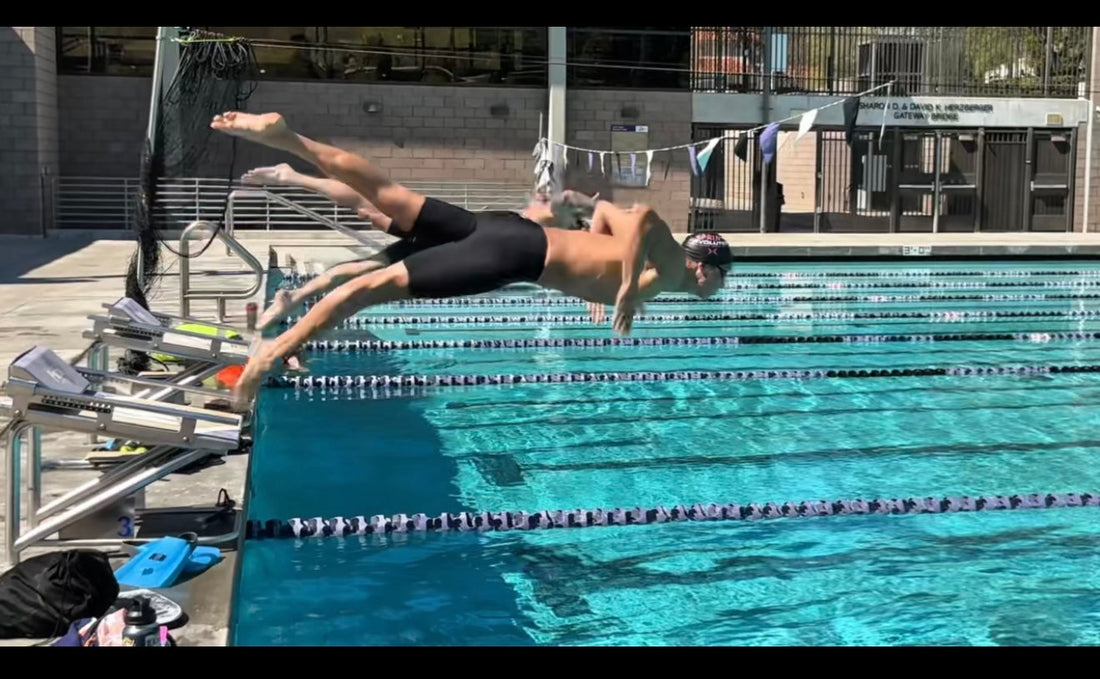
How to Swim Faster: 9 Key Metrics Sprint Swimmers Should Monitor
Share
Optimizing Performance: Essential Metrics Every Sprint Swimmer Should Track
Sprint swimming isn’t just about natural talent — it’s about precision, consistency, and data-driven improvement. Whether you’re aiming to drop time in the 50m freestyle or sharpen your turns, tracking the right performance metrics can make all the difference. Below are 9 essential categories of metrics every sprint swimmer should monitor to maximize training and race-day performance.
1. Times & Speeds
Tracking time is the foundation of sprint swimming performance. Without accurate data, progress is hard to measure.
✅ Personal Bests (PBs): Regularly update personal records for each event to stay motivated and focused on clear goals.
✅ Training Splits: Record splits during practice sets to analyze pacing, endurance, and sprint finishes.
✅ Dive Times (15m & 25m): Measure block starts and underwater speed to fine-tune explosive power and early race positioning.
2. Technical Metrics
Technique can make or break a sprint race. Master these technical details:
✅ Stroke Rate (Tempo): Monitor strokes per minute to optimize rhythm and turnover speed.
✅ Distance Per Stroke (DPS): Balance efficiency and speed by tracking how far you travel each stroke.
✅ Breakout Efficiency: Analyze how effectively you transition from underwater kicks to surface swimming.
3. Starts & Turns
Starts and turns are critical for winning margins in sprint events.
✅ Reaction Times: Improve explosiveness off the block — every fraction of a second counts.
✅ Underwater Kick Efficiency: Track dolphin kicks and streamline to maximize underwater distance and speed.
✅ Turn Times: Measure how quickly and smoothly you complete flip turns or open turns.
4. Strength & Power
Sprinters need raw power — in and out of the water.
✅ Dryland Strength Gains: Track compound lifts like squats, pull-ups, and presses to build total-body strength.
✅ Vertical Jump Height: Regularly test leg power — essential for starts and explosive turns.
✅ Resisted Swimming Output: Use equipment like power towers, parachutes, or stretch cords to gauge water-based strength.
5. Physiological Markers
Understand how your body responds to training for optimal performance adjustments.
✅ Heart Rate Recovery: Measure how quickly you recover between sprints to fine-tune conditioning.
✅ Lactate Levels: Use lactate testing to monitor anaerobic capacity and adapt sprint sets accordingly.
✅ Breath Control (Hypoxic Training): Track breath-hold training to improve oxygen efficiency and sprint endurance.
6. Training Consistency & Quality
Consistency is key to progress.
✅ Session Attendance: Monitor training frequency to ensure steady improvement.
✅ Effort Ratings: Rate perceived effort to balance training intensity with recovery.
✅ Quality Sets Completed: Track completion rates for key sets — staying accountable to performance goals.
7. Equipment-Based Metrics
Equipment helps build targeted strength and technique.
✅ Resistance Training Times: Measure how resistance tools (parachutes, power sox, cords) improve sprint speed.
✅ Fin & Paddle Efficiency: Monitor how aids improve technique, power, and propulsion — and how those gains translate when swimming without equipment.
8. Mental & Psychological Metrics
Sprint swimming is as much mental as physical — mental sharpness wins races.
✅ Confidence & Attitude Scores: Self-assess regularly to monitor motivation and mindset.
✅ Visualization & Focus Sessions: Track mental rehearsal and focus training to enhance competitive readiness.
✅ Competitive Readiness Assessments: Regularly gauge how prepared you feel leading up to key meets.
9. Recovery & Health
Recovery is where gains happen. Stay on top of it.
✅ Sleep Quality & Duration: Record sleep patterns to optimize physical and mental recovery.
✅ Nutrition & Hydration Tracking: Monitor dietary habits to support energy, performance, and recovery.
✅ Injury & Illness Logs: Track any disruptions to adjust training and prevent setbacks.
Why Tracking Metrics Matters for Sprint Swimmers
By systematically tracking these performance metrics, sprint swimmers can:
✅ Identify strengths and weaknesses
✅ Set specific, measurable goals
✅ Stay motivated through visible progress
✅ Optimize every phase of training — from starts to finishes
✅ Achieve faster, more consistent performances
